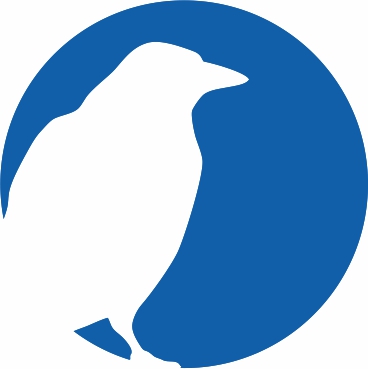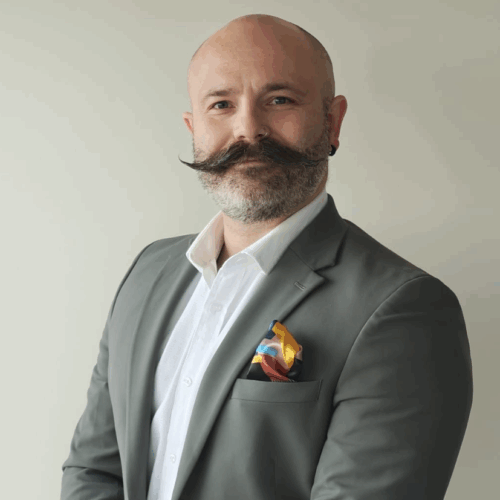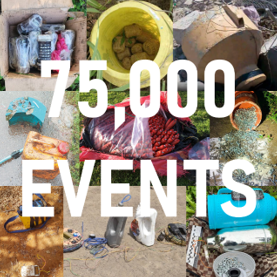Justifying the investment in cradle to grave consultancy
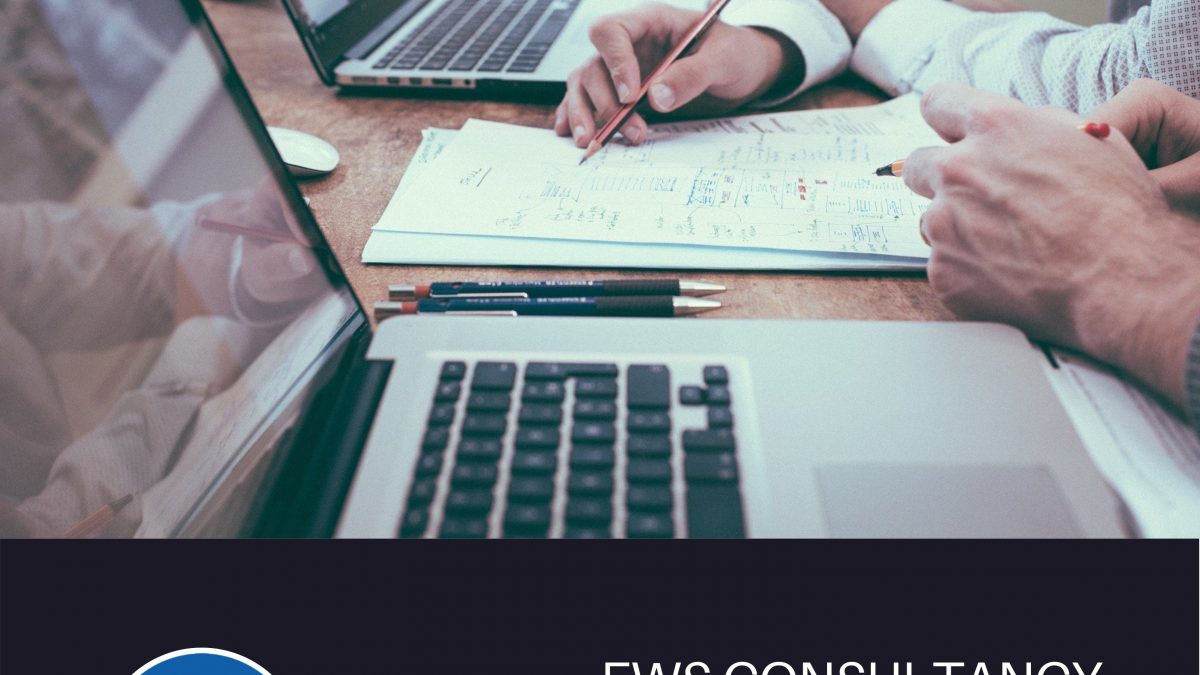
As many of our friends, colleagues and clients will know, EWS was formed in 2009 when we realised that there was a paucity of unbiased and system agnostic thought leadership in our industry, says Dave Ruddock, Chief Technology Officer.
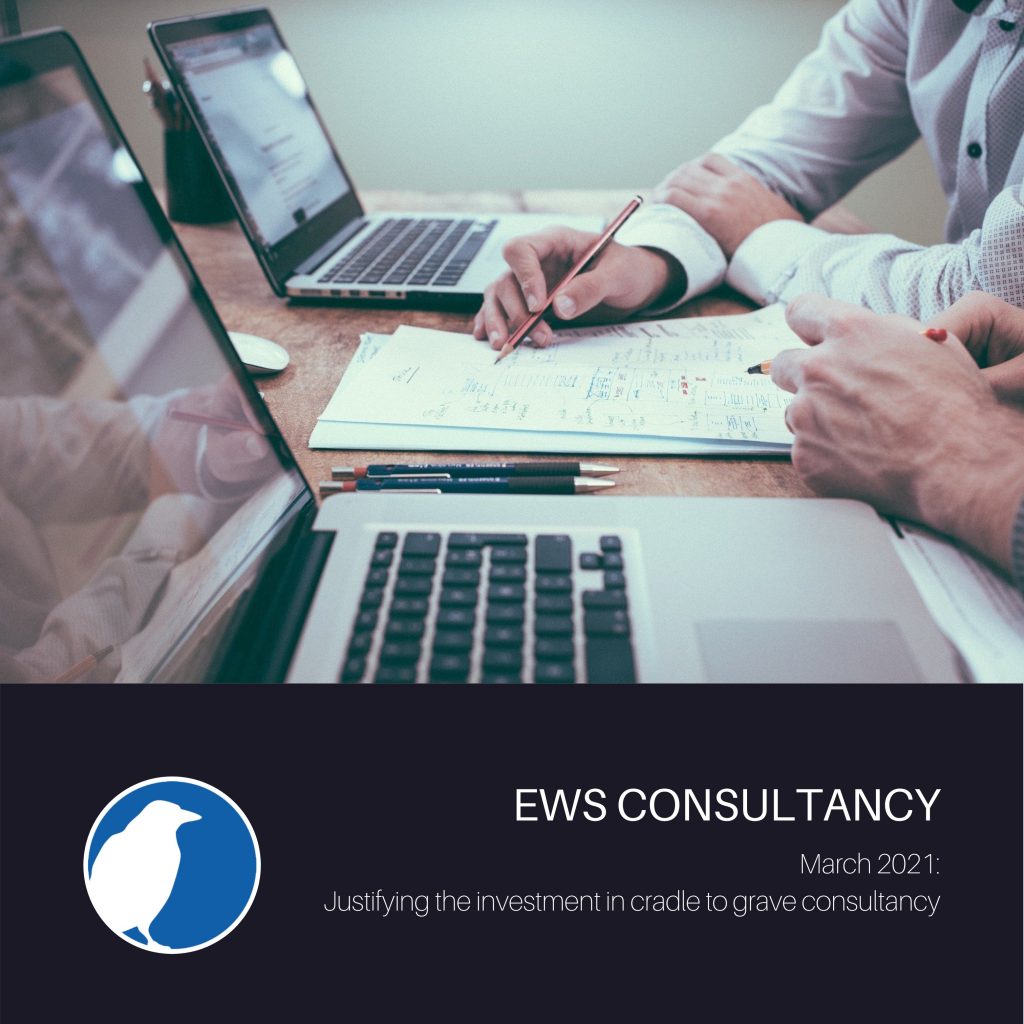 Our plan, to put ourselves between manufacturers and the end-user in the customer friend role, was bold. There was nobody at the time – and arguably this is still the case – offering cradle to grave consultancy that was based on both sides of the technology development and operational schism; end users were having issues articulating their requirements and had a lack of sight of what was on the market, and industry in many cases lacked the operational perspective in their product development.
Our plan, to put ourselves between manufacturers and the end-user in the customer friend role, was bold. There was nobody at the time – and arguably this is still the case – offering cradle to grave consultancy that was based on both sides of the technology development and operational schism; end users were having issues articulating their requirements and had a lack of sight of what was on the market, and industry in many cases lacked the operational perspective in their product development.
However, justifying the investment in consultancy, irrespective of the size of business or organisation, can be challenging, so let’s start with a hypothetical situation to start to understand the value proposition for consultancy.
Quick hypothetical situation to understand risk and reward
If you have a widget, then everybody sees the widget and by convention, an inherent value in that widget. It has tangible value and easy to justify the costs for. If the widget is a low value item, then the risk and cost of failure is usually not significant. However, if you mistakenly buy the wrong widget or you subsequently find out that it does not fit into your operating concept, it causes interoperability issues, or nobody is trained to manage, maintain, and operate the widget, then the consequences can be far reaching.
When you are trying to solve particularly complex problems, the solution is likely to involve the investment and commitment of significant amounts of money, time and resource. A complexity that can be exacerbated when systems are mission critical and or are used to save lives.
In high value or high-risk situations like this most companies will consider involving a consultancy firm at the outset – which we call cradle to grave or through-life consultancy – providing knowledge and skills gaps or technical support, helping to improve the performance of the project delivery, provide objective advice and guidance, help define strategies or implement solutions, amongst many things.
But ‘consultancy’ is often considered an ‘intangible’ benefit and therefore it can be difficult to justify the costs to senior management. This results in people and companies ‘muddling along’, all trying their best but not necessarily achieving the optimum and most effective solution for the problem in hand.
Justifying the investment in cradle to grave consultancy
Due to its inherent bespoke elements, the benefits of using a cradle to grave consultancy can be especially difficult to explain and it can take a big leap of faith for a potential client to embark on a consultancy partnership that is based upon collaborative working and trust. But in our experience at EWS, it really works and the value it brings to the successful delivery of a project can be exponential.
In this first of a series of short blogs and without revealing the client or the product, Dave will demonstrate in bite size pieces how the through-life consultancy provided by EWS has successfully helped our clients to achieve key strategic outcomes efficiently and on budget.
Example – how EWS cradle to grave consultancy added value to product development
At EWS our operational experience and market engagement means that we are ideally suited to assisting and providing focus for product development across a broad range of CEMA related specialisms, including spectrum operations, C-UAS, electronic warfare and all elements of the C-RCIED.
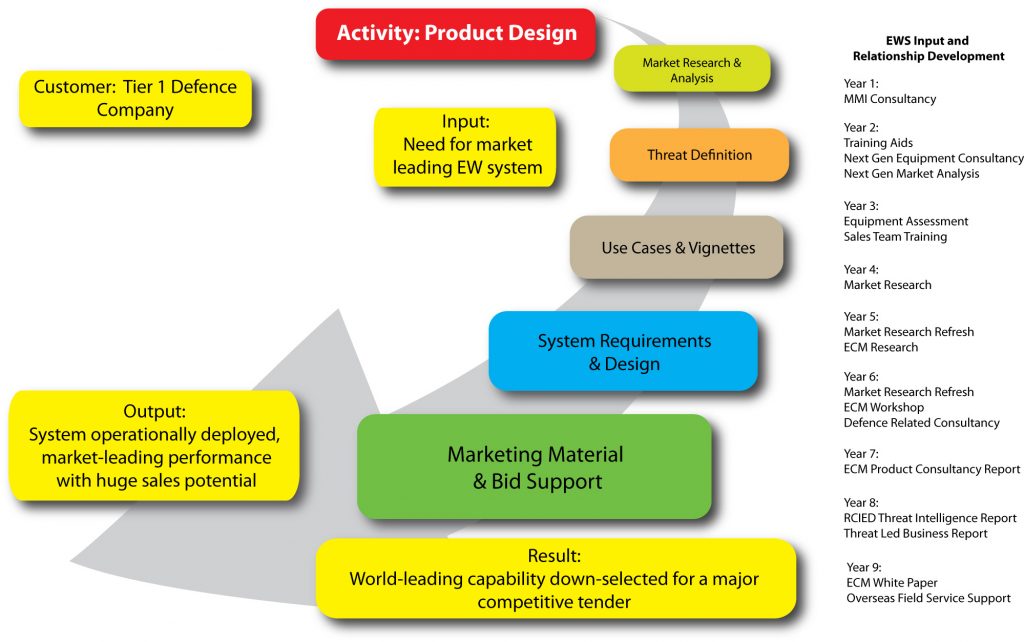
Example – how cradle to grave consultancy added value to product development
In this example, we developed a very early relationship with a major Defence contractor as they were embarking on product development activities which resulted in 20 separate pieces of consultancy, spanning four of our business streams: consultancy, intelligence, training and manpower.
Our early consultancy activities were very much related to “what the market is looking for” aligned to threat definition, use cases and system requirements to affect equipment technical specifications, ergonomics, functionality, and SWAP requirements.
At EWS our unique abilities to conduct open-source product, competitor and opportunity market research informed their team of the competitive landscape, where the sales opportunities lay and at certain junctures, supported internal product investment and NRE decision making. As the project evolved, our value contribution included providing product related workshops and training sales staff to enable them to better engage with their customer base.
After prototype product testing and evaluation, our consultancy focus turned to helping Business Development and Marketing efforts, including producing marketing literature, bid writing assistance, identifying win-themes, and writing white papers.
For the same client, more recently we have provided field service representatives (FSRs) to effectively deploy their equipment overseas to ensure that are fully supported and fit-for-purpose.
Speak to EWS for cradle to grave consultancy advice
This example of our unique cradle to grave consultancy approach is just one of many bespoke services we have developed showing how we can help industry understand and implement end-user requirements into a market-leading product. This level of consultancy interaction is not always needed and may not be appropriate for every product development cycle, but hopefully you can see elements of where some of these consultancy activities may add value to your business needs.
Dave’s next blog will consider how consultancy provided by EWS helped a law enforcement end-user to navigate the market to acquire new equipment capability, so watch this space!

